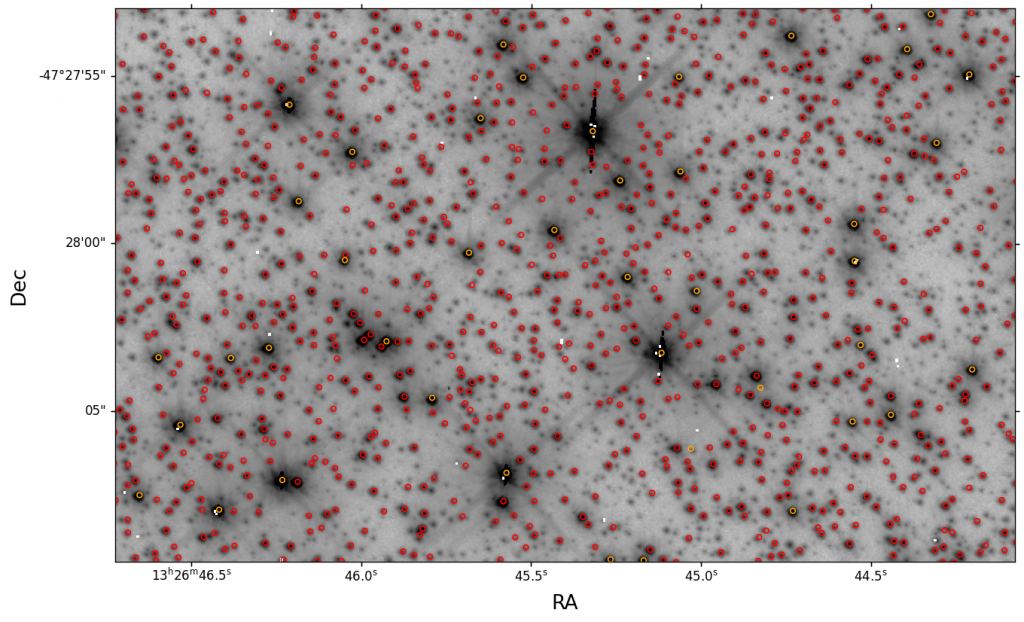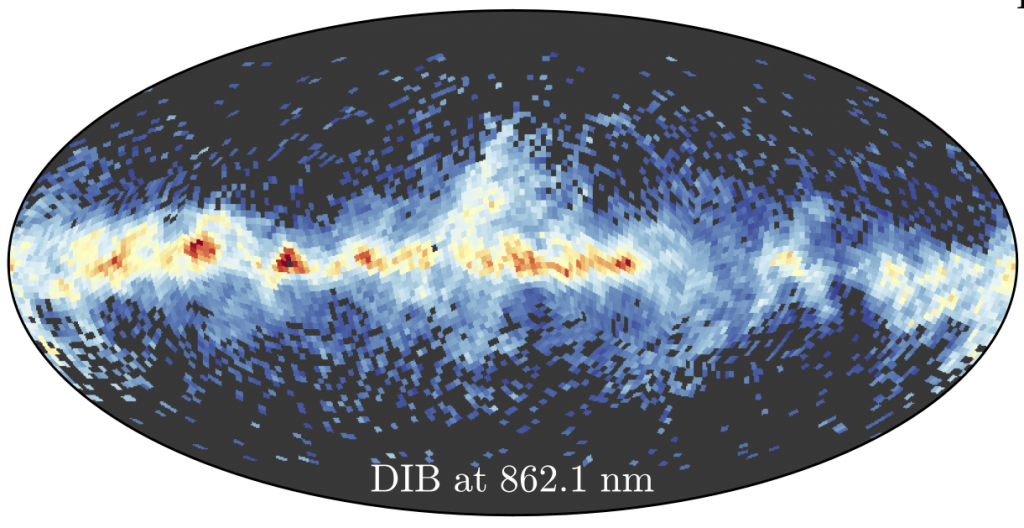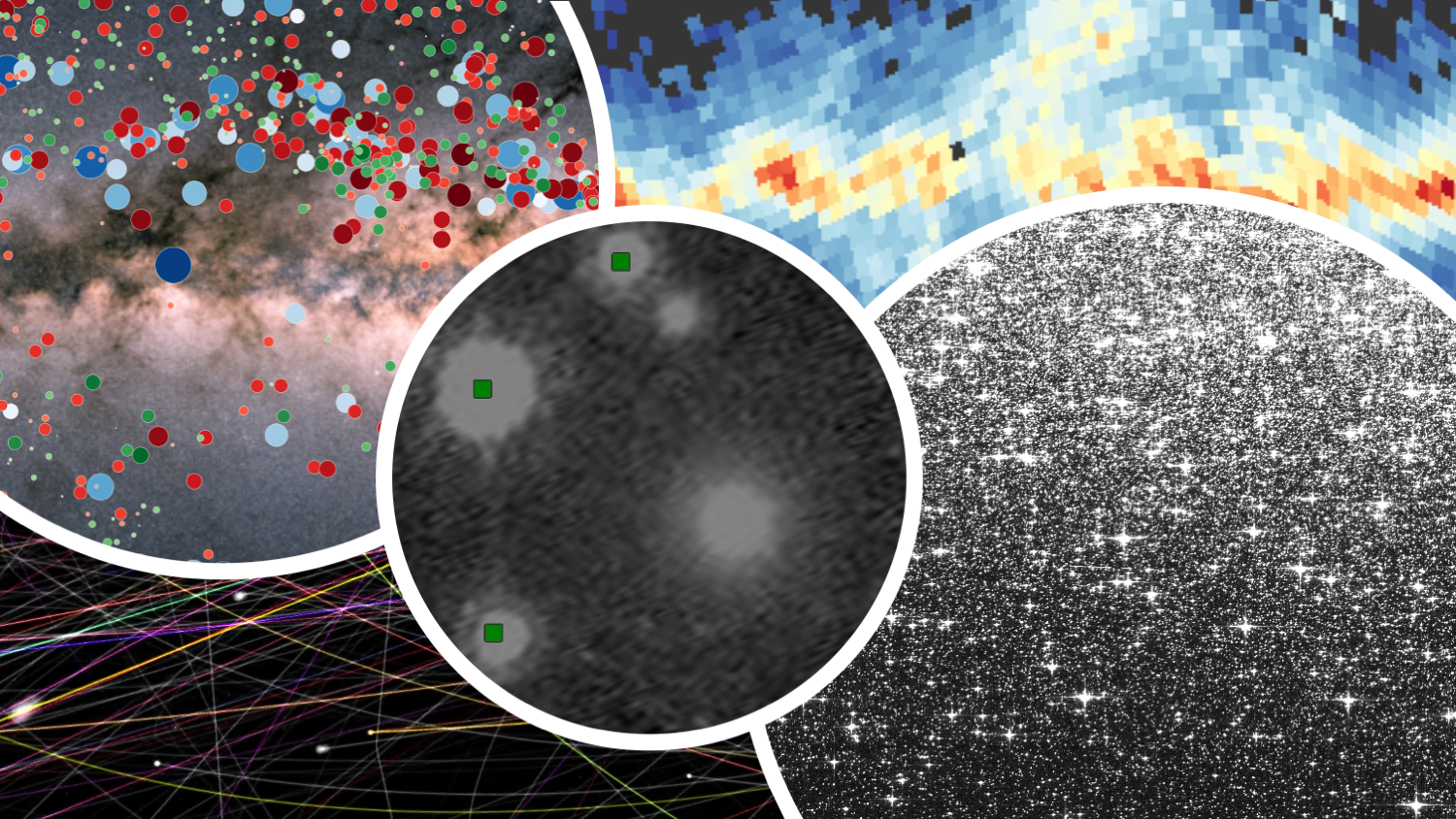Today, the European Gaia space mission released another batch of scientific findings from our galaxy and beyond. Among other things, the celestial mapping mission has, beyond its own capabilities, cataloged another half a million stars in a dense star cluster, identified nearly four hundred potential cosmic lenses, and determined the positions of more than one hundred and fifty thousand asteroids in the solar system. .
The Gaia space observatory is mapping our galaxy and surrounding regions in infinite dimensions, and is creating a star catalog more accurate than ever before. With its help, we can get a very detailed picture of our place in the universe and the functioning of many different types of celestial bodies around us.
The mission’s latest “target data release” (Release of a Gaia-focused product) An important contribution to our cosmic map. The new data has brought exciting and unexpected scientific results that far exceed the originally planned capabilities of the Gaia Space Telescope. The FPR target data communications were created through the joint work of the Gaia Data Processing and Analysis Consortium (Gaia DPAC), which includes more than four hundred researchers, in which eight researchers from the Astronomy Institute of Astronomy and Earth Sciences Research HUN-REN participate. The center also actively participated.
Half a million more stars using Gaia’s new observing method
The third Gaia data release in 2022 contained data on more than 1.8 billion stars, which has already managed to paint a very detailed picture of the Milky Way and the cosmic environment of our galaxy. However, there are still white spots remaining on this map. The space telescope couldn’t fully map, for example, really star-dense regions, so it only recorded data on the brightest stars, leaving faint data in between.
Good examples of such regions are globular clusters. These star clusters are some of the oldest objects in the universe, making them very useful to researchers looking into our cosmic past. However, the center of these clusters is so full of stars that they can be seen merging in our telescopes, so getting a clear image of them can be problematic. For this reason, the structure of the groups also cannot be accurately assessed.
The first Gaia cluster to attempt to fill this gap was Omega Centauri, the most populous globular cluster visible from Earth. Instead of focusing on individual stars as usual, the space telescope used a special mode to image the entire group as it entered its field of view.
“In Omega Centauri alone, we found half a million new stars that Gaia had never seen before, and that’s just one cluster!” – said Katja Wengel, an employee of the German Leibniz Institute for Astrophysics Potsdam (AIP) and the lead author of the technical article.
“It’s not just about filling in the gaps, although that is also important,” added Alexei Mintzes, also a member of the Potsdam Institute AIP and co-author of the article. “New measurements have made it possible to detect stars that are too close to each other to fit into Gaia’s traditional data processing procedures. With the help of new data, we can study the structure of the cluster, the distribution of stars in it, their movements, etc., and compile a complete and comprehensive map of Omega Centauri. We will use the full potential of Gaia, the utmost capabilities of this magnificent celestial instrument.”
The results clearly exceed the planned capabilities of the space telescope. The consortium is one Implemented such a method of observation, which was originally only used to verify that Gaia instruments were working properly, but did not record data. “We didn’t even plan to use them in science, which makes the results even more exciting,” Wengel said.

The space telescope is currently mapping eight more regions using this method: the results will be published in the fourth data release. The data will help astronomers understand how these cosmic building blocks work. This will be a key step in verifying the age of our galaxy, determining its center, finding out what collisions it has undergone, verifying models of galaxy evolution, and even deducing the age of the entire universe itself.
In Pursuit of Lenses: Gaia, the Unexpected Cosmologist
Although Gaia was not designed for cosmic purposes, its new findings look far out into the distant universe, searching for gravitational lenses, elusive and exciting objects that hold answers to humanity’s greatest questions about the universe.
Gravitational lensing occurs when the image of a distant object is distorted because there is additional mass between us and the object, such as a star or galaxy. This intermediate mass acts like a giant magnifying lens, amplifying the brightness of the distant source and projecting multiple images of it across the sky. Interestingly, these strange and rare phenomena have enormous scientific value because they reveal unique clues about the first days and the first things in the universe.
“Gaia is a real lensing magnet,” says Christine Ducourant of the Astrophysical Laboratory in Bordeaux, France. “Thanks to Gaia, we have realized that some of the objects we see are not simple stars, even if they appear to be. These are actually very distant quasars, which are extremely bright and energetic galactic cores fueled by black holes. We now present 381 strong candidates that could be lensed quasars , and we think 50 of them are very likely: this list is a goldmine for cosmologists and the largest number of candidates ever published simultaneously.
Finding lensed quasars is a major challenge. Lensed images of a system can blend across the sky to mislead researchers, and these quasars are also very far away, making them faint and difficult to see.
“The great thing about Gaia is that it looks at the entire sky, so we can look for lenses without knowing where to look,” added Laurent Galluccio, a researcher at the French University of Côte d’Azur. “Gaia becomes the first mission to search the entire sky for high-resolution gravitational lensing.”
Thanks to Gaia’s cosmic adventures, her work can be linked with the recently launched European Euclid Space Telescope, which will investigate the secrets of the dark universe. Because although they are focused on very different things — Euclid will map billions of galaxies, and Gaia will map billions of stars in our galaxy — the quasars discovered by Gaia will be important evidence for Euclid, too.
Asteroids, starlight and pulsars added
Additional articles published today provide more new findings about the exciting and sometimes mysterious celestial bodies that surround us. One of them, for example, reveals new things about the asteroids that populate the solar system. The new measurement data contributed to almost doubling the observation time, allowing researchers to determine the orbits of more than 150,000 small celestial bodies with twenty times greater accuracy. Among other things, this is a very important result from the point of view of protecting our planet. Later, as part of the fourth data release, more precise orbits for many asteroids, comets and moons will again become available.
In another paper, the disk of the Milky Way was mapped, using the weak signals visible in starlight and the faint signatures of gas and dust floating between the stars. For this purpose, the researchers collected images of six million stars, compiling a huge database of faint spectral lines that had never been studied before on such a large sample. It is hoped that this data will also allow them to determine the origin of the lines, which are now suspected to be complex organic molecules. Discovering the origin of the signal will help us study the complex and intertwined physical and chemical processes occurring in our galaxy, as well as better understand the properties of interstellar materials.

Last but not least, an additional technical article presents the dynamics of ten thousand red giant pulsars and doubles in the largest database of its kind available to date. These stars are of great importance in calculating cosmic distances and studying the properties of stars and their paths of evolution. The brightness changes have already been published by the consortium in the third data release: the current catalog complements this With changes in optical velocity spectroscopy. This made it possible, for example, to separate motions caused by the rotation of binary stars from motions caused by the pulsation of the star’s surface, even when the brightness changes are very similar. With the new release, we can better understand how these fascinating stars change over time.
“The release of the new data confirms once again the fundamental and widespread importance of Gaia – even in topics we were not even designed to investigate,” said Timo Prosti, principal investigator of the Gaia project at ESA. “Although its main purpose is to survey the stars, Gaia also examines everything else, from small celestial bodies in the solar system to multiple quasars imaged billions of light-years away, far beyond the confines of the Milky Way. Our mission gives us a very unique view of our universe , and we are doing everything we can to make the most of this very wide point that covers the entire sky.
Next steps
The space telescope is expected to be able to operate until 2025, but the huge amount of data it collects will provide enough work for the consortium for years to come, as galactic participation will continue. “Gaia is clearly the leader in European space astronomy. Our participation in it, as in other ESA missions, shows that galactic astronomers are at the forefront of science. “Gaia is clearly at the cutting edge of science,” concluded Laszlo Molnar, a member of the staff at the Astronomy Institute of the European Space Agency. Astronomy and Earth Sciences HUN-REN and member of the Gaia Consortium, said: “We not only use the data released, but also participate in producing them.”
The previous third release of the Gaia data was published in June 2022, providing the most detailed map of the Milky Way system. The next fourth statement is expected to be issued by the end of 2025 at the earliest, and the release of the previous and current large target statements will serve as a basis for it. According to plans, astronomers could use it to more accurately identify the color, position, and motion of stars, measure variable stars and multiple star systems, identify quasars and galaxies, collect new exoplanet candidates, and who knows how many other unexpected planets. Discoveries will hide data.
Hungarian researchers involved in the release of Gaia FPR data on behalf of HUN-REN CSFK: Péter Ábrahám, Ágnes Kóspál, Mária Kun, Gábor Marton, László Molnár, Zsófia Nagy, Emese Plachy, László Szabados.
comment












































